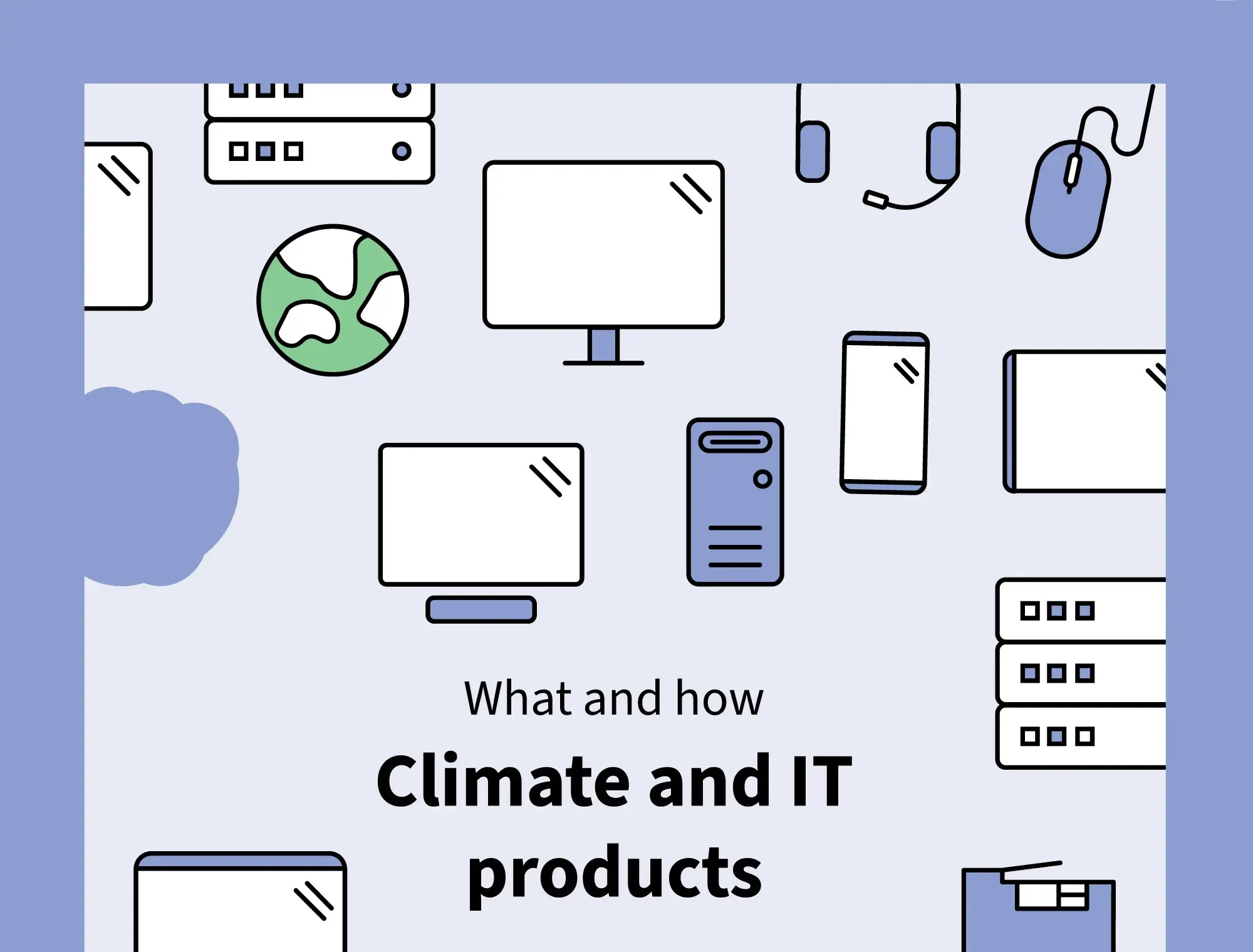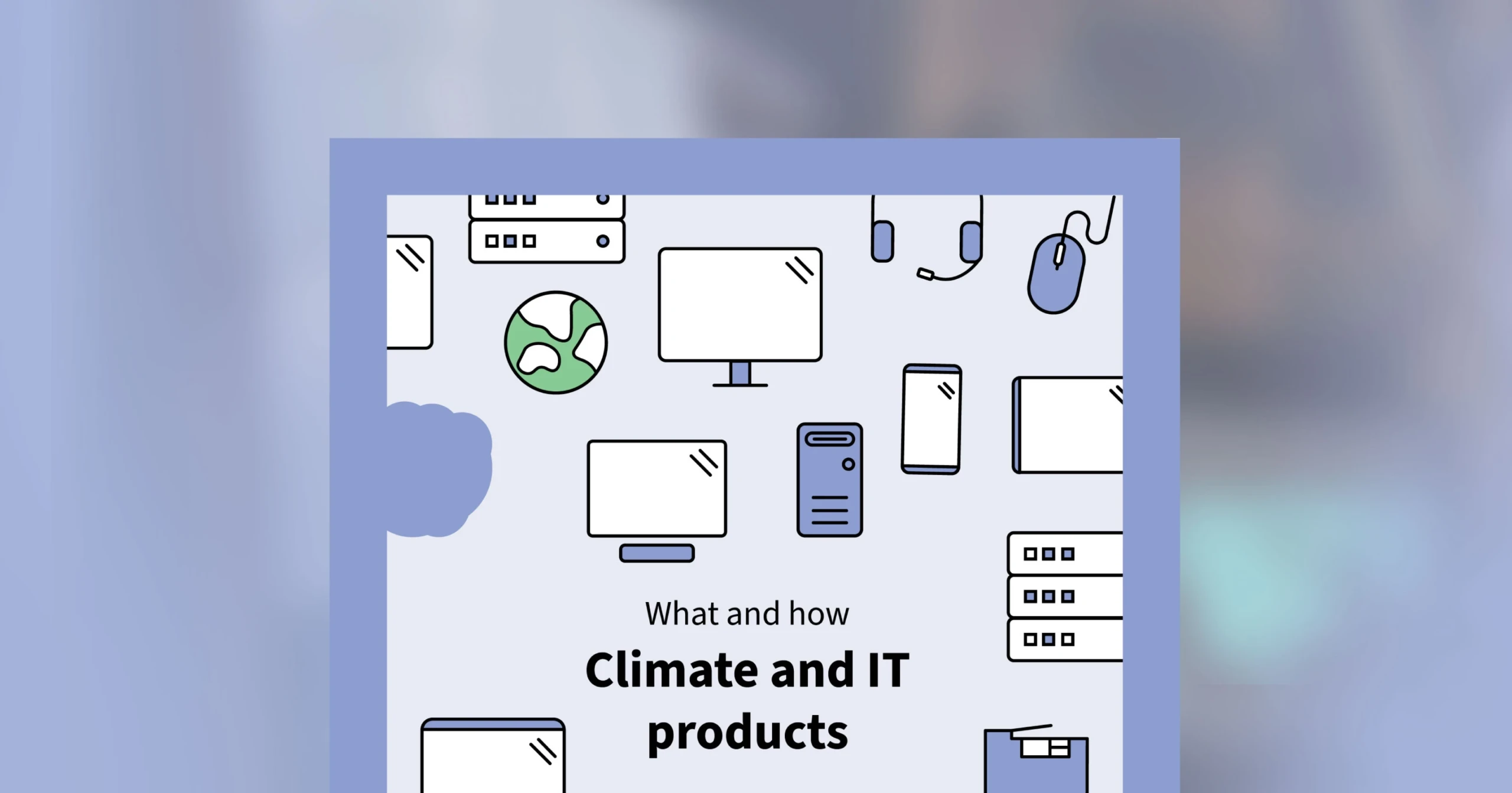The Dutch bank ABN AMRO recognizes the impact IT has on the environment and takes a data-driven, action-oriented approach to reducing emissions. Procurement is a vital part of that process – and TCO Certified helps keep it on track.
Using IT to drive change
When ABN AMRO began mapping its environmental impact, one area stood out as more significant than others: IT. This insight sparked a transformation. Since 2019, ABN AMRO’s Sustainable IT department has taken a leading role in aligning the bank’s digital operations with its overall climate goals.
“We research our footprint, create dashboards, and then apply tools and tactics to actually reduce emissions,” says Wiebren van der Zee, who leads the Sustainable IT team. “Education and integration are key – we embed sustainability into everything from architecture and procurement to development and operations.”
Starting at the source
With IT purchases accounting for a significant share of both emissions and costs – ABN AMRO sees procurement as a key driver of reducing climate impact. The bank now requires that at least ten percent of the questions in each request for proposal relate to environmental or social criteria. This applies to both new and existing suppliers.
“We’re involved early in the process, working closely with our IT department,” says Ben Bakker, who leads sustainable purchasing at the bank. “We evaluate suppliers not just based on cost and risk, but on their performance and long-term approach to sustainability. Sometimes that means choosing a slightly more expensive offer – if it comes with a better sustainability strategy and outcome.”
From shortcut to strategic support
For ABN AMRO, using TCO Certified was an easy first step. “It was basically low-hanging fruit,” says Wiebren. “It didn’t cost us anything, and we knew the IT hardware products had been independently checked for environmental and social responsibility.”
What began as a practical shortcut has since become a strategic asset – supporting procurement, internal awareness, and regulatory reporting. “TCO Certified helps us show regulators how we’re using more sustainable hardware,” says Ben.
He adds that he also appreciates the onboarding guidelines for those new to working with the certification and sustainable purchasing. “Even if someone has no experience with sustainability, they can visit the TCO Certified website and get a clear sense of how it can be introduced to their daily work.”
A trusted benchmark
TCO Certified plays an important role in ABN AMRO’s IT toolbox. Used as a mandatory requirement for end-user laptops, it helps the bank choose products with lower emissions, improved energy efficiency, and longer lifespans.
“We appreciate its methodology, where the criteria become stricter with every new generation,” says Wiebren. “It’s not just a one-time check – it reflects ongoing development, which helps us become more sustainable over time.”
Ben agrees: “We use TCO Certified as a benchmark, to see what has been tested and evaluated. It gives us something to refer to when discussing or comparing products.” The certification is also used to raise awareness internally, with the TCO Certified label serving as a reminder of the bank’s sustainability commitment.
Making suppliers part of the solution
Beyond the product level, ABN AMRO conducts climate assessments of its suppliers and tracks progress through regular meetings.
“Five years ago, few suppliers had answers to our sustainability questions,” says Ben. “Now it’s becoming more and more normal – especially among larger companies, who see it as added value for their own business.”
Still, challenges remain. Data quality related to scope 3 emissions and circularity is often inconsistent, due to immature or missing data, or metrics that are difficult to compare. Another complication is the sheer number of ecolabels on the market, each with different scopes and standards – as well as suppliers’ own methodologies and certifications. “We prefer third-party certifications like TCO Certified,” says Wiebren. “They offer better neutrality and assurance than internal claims.”
Even so, he describes supplier engagement as generally positive, especially for end-user devices. “Most suppliers have already certified their products, or are well on their way.”
Drive change from within – purchase by purchase
Asked for their advice to others, Ben starts off by emphasizing the importance of internal engagement. “At first, people said they didn’t have time for sustainability – or that cost was the only thing that mattered,” he recalls. “You need support from management, people inside the organization who keep pushing, and a strong story.” For ABN AMRO, tools like TCO Certified make that story easier to tell – offering structure, clear criteria and visible labels that raise awareness across the company.
Wiebren recommends seeing every new purchase as a chance to make progress. “I often say that an IT transformation that doesn’t lead to lower impact isn’t the right transformation,” he says. “We’re not going to stop buying laptops, but we can make sure the ones we buy last longer and have a smaller climate footprint than the previous ones.” In his view, this approach creates positive momentum – both within the organization and across the industry – encouraging suppliers to move in the same direction.
Climate efforts at ABN AMRO
ABN AMRO’s purpose – “Banking for better, for generations to come” – guides the bank’s work across three key themes: climate change, nature, and social impact. Its climate strategy focuses on limiting global warming to 1.5°C and supporting the transition to a net-zero economy by 2050.
The bank aims to drive change in two main ways: by helping clients reduce their emissions through advice, financing, and engagement – and by continuing to shrink its own footprint and embed climate strategy across all operations, including IT.





